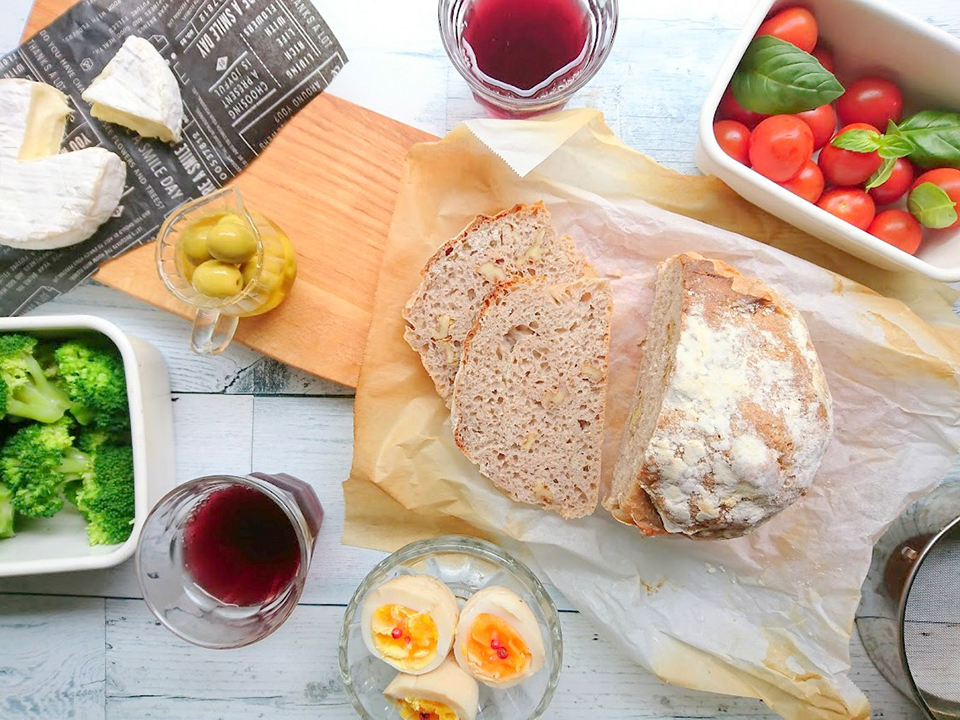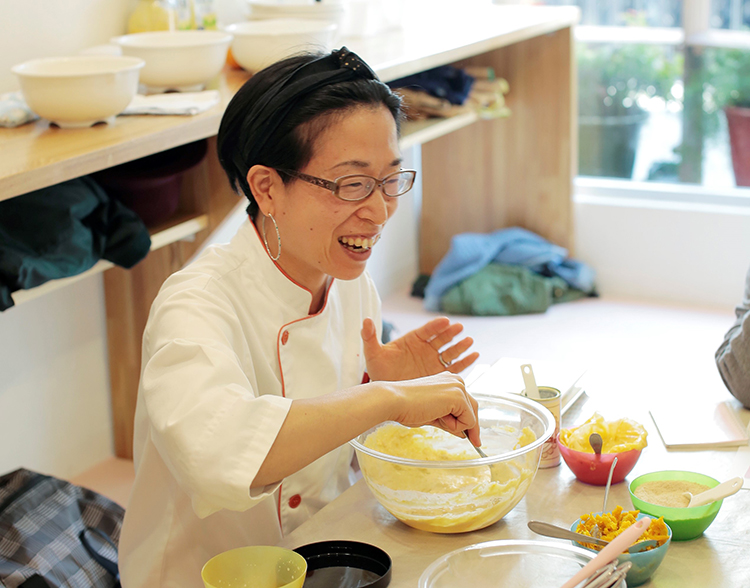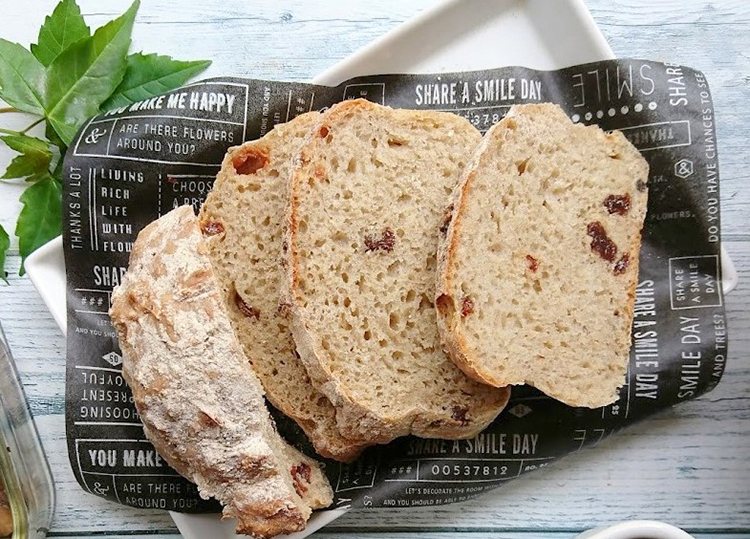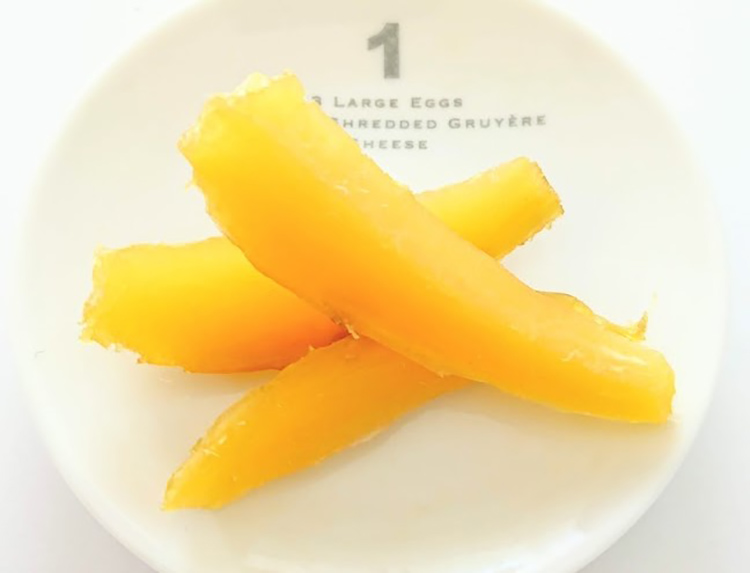No-Knead Bread: Easy Homemade Recipe by Fermentation Expert
Apr 21,2022
No-Knead Bread: Easy Homemade Recipe by Fermentation Expert
Apr 21,2022


You decide to make home-baked bread for your little one because then you know it’s safe to eat. But when you actually set your hand to it, your child starts making a big fuss and insisting on being held. You get increasingly annoyed as you knead away like mad. Yet it’s your child you’re doing it for in the first place.
There has to be a better way to make bread. So thought fermented food expert Aoki Misayo—which is why she came up with no-knead bread.
Here Misayo shares the story behind the birth of no-knead bread. She also talks about bringing up kids and meal preparation techniques that make you feel better about yourself as a mom.
Aoki Misayo runs the Ferment Family Cooking School. She also advocates meal preparation techniques that make you feel better about yourself by making the most of the power of fermentation. So how did she end up pursuing her present career? It all started when she tried making home-baked bread for her own kids.

Fermented food expert Aoki Misayo
“When I set to work making bread, my kids would start whining and burst into tears because I wasn’t paying attention to them. Yet I was doing it for them, right? I’d get so annoyed. I’d scream ‘Hold on a sec!’ or tell them off.”
Then Misayo realized something. “The whole reason I’m making bread is because I want my kids to eat great-tasting food that I know is safe. I want them to be happy. So why aren’t any of us smiling? This is all wrong.”
Misayo couldn’t even hug her crying children. Her hands were all covered in flour. As she stared at them, it occurred to her to completely skip the kneading stage of the breadmaking process, the messiest and most labor-intensive step.
“If my hands didn’t get messy, I thought, I’d be able to give my kids an instant hug. And not having to spend time kneading would make breadmaking a lot faster. Then my kids and I would both be smiling.”
The idea of no-knead bread emerged from Misayo’s knowledge of how to harness the power of microbes—in other words, fermentation. This she acquired at Tokyo University of Agriculture, where she studied in the Department of Fermentation of the Faculty of Agriculture (now the Department of Fermentation Science, Faculty of Applied Biosciences).
The recipe Misayo devised is a godsend. Microbes do the work for you, so you have more time for yourself.

▼Here’s a video showing how to do it (in Japanese).
Great-tasting no-knead bread, the world’s most hassle-free bread. Avoid getting your hands floury—and feel much better about yourself.
No-knead bread virtually makes itself. All you have to do is measure out the ingredients and mix them for three minutes. Another great thing is that you can make it with your kids. There are few dishes to wash, and as long as you’re careful when mixing, there’s nothing to create a mess.
Say you’ve finished mixing and your child starts whining. Or you’re about to stick the dough in the oven but it’s time to pick up your kids. You can simply stop right there, then pick up where you left off once your hands are free again.

Raisin and rye flavored no-knead bread
“Making bread while telling off a crying child isn’t any fun for either of you. There must be moms out there who get down on themselves and become despondent. How can this be happening? Why are things going wrong? But if you learn to harness the power of fermentation, microbes will do the job for you, making a great loaf of bread the simple way and saving you time.
“I want to empower moms to feel better about themselves. If they’re going to be baking anyway, I want them to be able to say, ‘I did it with my kids, and we were all smiling.’ I want them to feel that they did it no time, yet it tasted great. That’s why I started featuring dishes that harness the power of fermentation in my cooking classes.”
In her private life, Misayo is the mother of three boys. Her middle boy has a developmental disability, and after she found out, she agonized a great deal until she got to understand the nature of his condition. There were days when she hated herself for telling him off in front of everyone. Still, making fermented foods improved her self-esteem, and in the process, she was able to come to terms with her own emotions and take a more positive attitude to parenting.

“I’m fond of natural leaven, and I use it when making no-knead bread. Natural leaven takes longer to ferment than yeast, but it has one advantage. It yields a distinctive flavor that yeast lacks. Well, it occurred to me that that’s like what distinguishes a developmentally challenged child from one who isn’t.
“Yeast is like a high-achieving student who grows quickly and gets higher than average marks in every subject. Natural leaven, on the other hand, may take time to grow, but it’s like a child who’s one of a kind. Once I started looking at it that way, I was able to let my boy grow on his terms, without comparing him to someone else.”
The recipes that Misayo teaches in her cooking lessons are full of carefully thought-out ways to cut corners, like making amazake (a sweet fermented rice beverage) in a thermos, or saving time tenderizing meat by using salted koji.
Misayo continues to explore the possibilities of fermentation. Her recipes all come with an implicit message to moms grounded in her own experiences as a parent. Are you exhausted from looking after your toddler? Are you struggling to raise a developmentally challenged child? Well, don’t push yourself too hard. Learn how to cut corners where you can. And give yourself a pat on the back.
Right now, Misayo is planning to set up an employment program for moms with disabled kids. To do that, she intends to use part of the proceeds from selling dried sweet potato slices cooked in the space left over in the oven when baking bread.

“The fact is, it’s hard to work a full-time job if your child has a disability, what with tantrums about going to school and having to ferry them to and from a special education facility. But there are lots of moms who would love to work. I was like that myself. I hope to help moms feel better about themselves by creating a place for them to work, to apply their skills during their spare moments. It would be great if this served as a kind of community, a place where, in the process of making dried sweet potato slices, moms could find peace of mind.”

Proprietor, Ferment Family Cooking School
Aoki Misayo developed no-knead bread based on her knowledge of fermentation science and her own experiences raising kids. She describes herself as a fermented food expert who hates washing the dishes. An avid fermenter and the mother of three children, she researches meal preparation techniques tailored to parents with developmentally challenged children.
Ferment Family: The site for moms who want to feel better about themselves by fermenting(in Japanese)